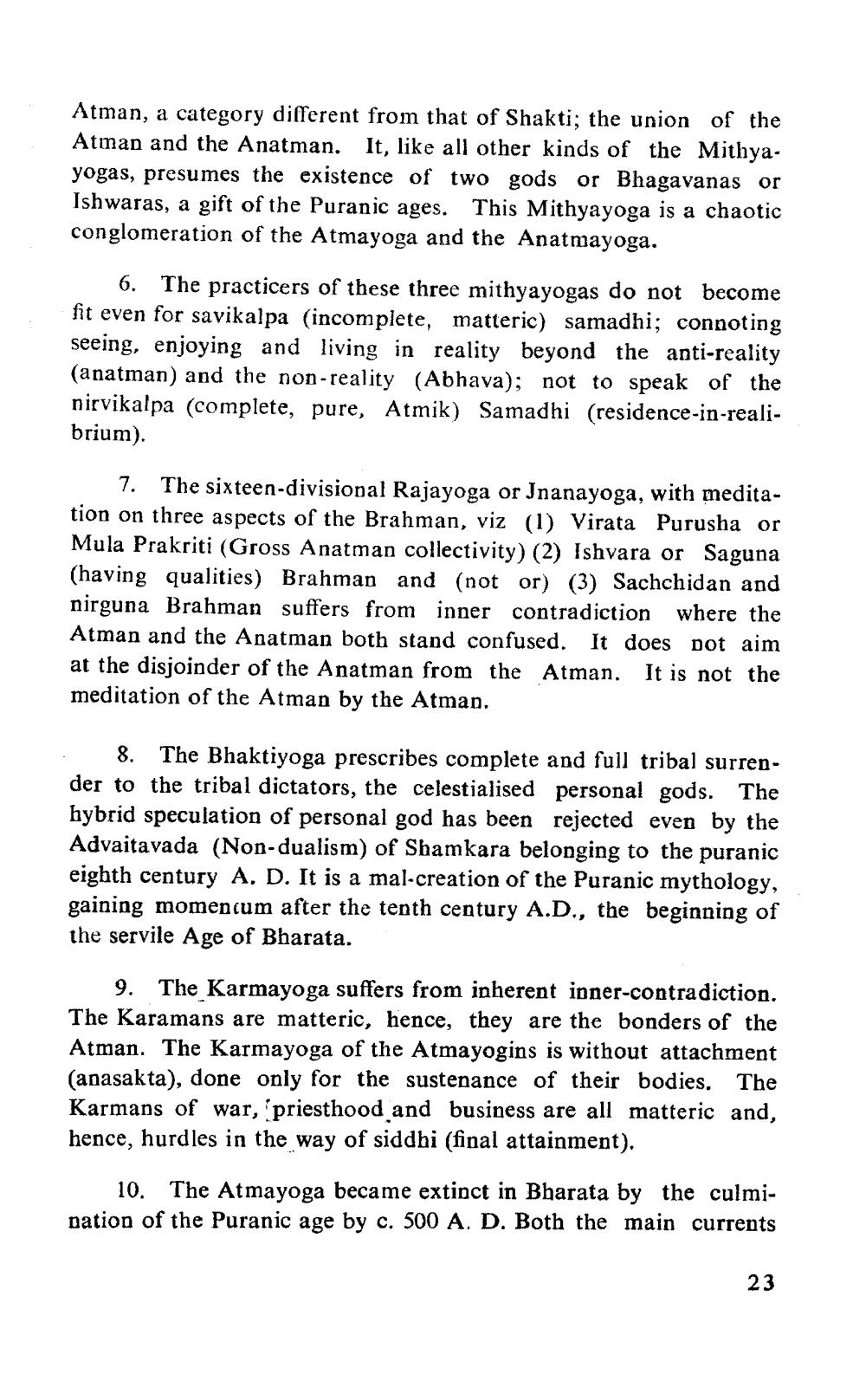________________
Atman, a category different from that of Shakti; the union of the Atman and the Anatman. It, like all other kinds of the Mithyayogas, presumes the existence of two gods or Bhagavanas or Ishwaras, a gift of the Puranic ages. This Mithyayoga is a chaotic conglomeration of the Atmayoga and the Anatmayoga.
6. The practicers of these three mithyayogas do not become fit even for savikalpa (incomplete, matteric) samadhi; connoting seeing, enjoying and living in reality beyond the anti-reality (anatman) and the non-reality (Abhava); not to speak of the nirvikalpa (complete, pure, Atmik) Samadhi (residence-in-realibrium)
7. The sixteen-divisional Rajayoga or Jnanayoga, with meditation on three aspects of the Brahman, viz (1) Virata Purusha or Mula Prakriti (Gross Anatman collectivity) (2) Ishvara or Saguna (having qualities) Brahman and (not or) (3) Sachchidan and nirguna Brahman suffers from inner contradiction where the Atman and the Anatman both stand confused. It does not aim at the disjoinder of the Anatman from the Atman. It is not the meditation of the Atman by the Atman.
. 8. The Bhaktiyoga prescribes complete and full tribal surrender to the tribal dictators, the celestialised personal gods. The hybrid speculation of personal god has been rejected even by the Advaitavada (Non-dualism) of Shamkara belonging to the puranic eighth century A. D. It is a mal-creation of the Puranic mythology, gaining momentum after the tenth century A.D., the beginning of the servile Age of Bharata.
9. The Karmayoga suffers from inherent inner-contradiction. The Karamans are matteric, hence, they are the bonders of the Atman. The Karmayoga of the Atmayogins is without attachment (anasakta), done only for the sustenance of their bodies. The Karmans of war, priesthood and business are all matteric and, hence, hurdles in the way of siddhi (final attainment).
10. The Atmayoga became extinct in Bharata by the culmination of the Puranic age by c. 500 A. D. Both the main currents
23




